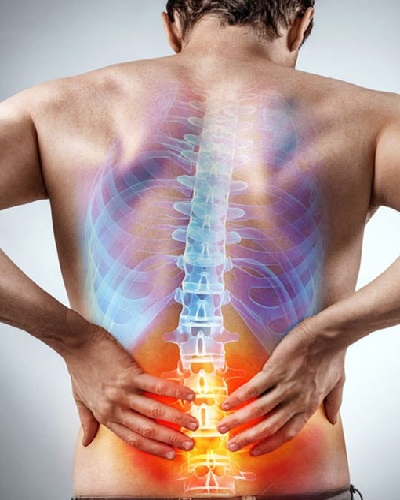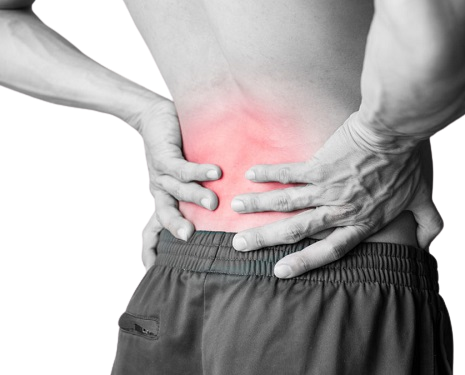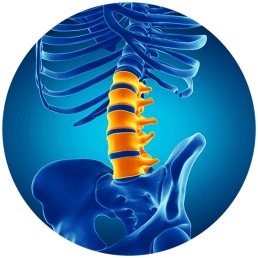Lower Back Pain Symptoms & Treatment Options
One of the most common afflictions we deal with as we age, whether due to injury, strenuous activity, or simply spinal degeneration, is low back pain. Because of the complexity of our spines, there are several possible causes that we can link to low back pain. Fortunately, low back pain is a highly treatable condition, as it is the most common—and researched—spinal complaint.
Generally, low back pain can be traced to an array of everyday conditions that influence our spine health. Overuse, injury, and muscle strains are some of the most common causes of lower back pain. These can result from strenuous physical labor or simply from engaging in repetitive habits that damage our spine. Constant bending or twisting on the job, for example, can wear out our intervertebral discs—the tiny cushions that safeguard our spinal vertebrae from compressional forces.
There are also a wide range of spinal disorders that can lead to lower back pain. Herniated discs, spondylolisthesis (a slipped vertebra), sacroiliac joint pain, or degenerative disc disease can easily produce low back pain ( known as lumbago), and these conditions are all too common in individuals as we age. When we are young, our intervertebral discs contain a gel-like fluid that permits each disc to be elastic. As we age, our discs lose their moisture content, becoming inflexible and more vulnerable to injuries such as disc protrusion, herniation or spondylolisthesis.
Not sure what’s causing your lower back pain? Schedule and appointment to see Dr Martin for a thorough evaluation!
Symptoms of Lower Back Pain
The symptoms of lower back pain may seem self-explanatory; however, the conditions and injuries that cause low back pain can also lead to other symptoms. All of the conditions we listed above (spondylolisthesis, osteoarthritis, etc.) are conditions that feature a wide range of symptoms. Although low back pain is often the most prevalent symptom of each disorder, that does not mean that other symptoms won’t also affect your pain or the recovery process.
However, the exact manner in which your lower back pain presents itself will depend upon the condition that is producing your discomfort. Neurological symptoms—such as tingling or numbness in the extremities, for example—are common with conditions such as herniated discs or spinal stenosis; whereas osteoarthritis, for instance, may cause joint inflammation in other regions of the body, such as the knees, elbows, or wrists. It is often the presence of these co-occurring symptoms that enable your doctor to make an accurate diagnosis of your condition.
Diagnosing and managing Back Pain
Your doctor may order specific studies design to pinpoint the source of your back pain and assist in making treatment decisions. A thorough History and physical examination most times gives clues or insights into the nature of the conditions causing pain. Imaging studies like X Rays, Dynamic X rays, CT scans, MRI’s etc may further assist with managing your pain.
Various types of conditions can generate back pain and addressing each patients needs individually is our goal. Contact us for further information and help!
Classification of Lower Back Pain
In addition, lower back pain can be subdivided into three classifications. These include:
Lumbar Radiculopathy: This is also known as “sciatica,” and many people have it. When the sciatic nerve of the lower back becomes compressed, it can cause severe pain that radiates from the lower back and into the legs.
Axial low back pain: This is very common. The pain is confined to the lower back and travels to the buttocks or legs. The pain can be dull or sharp and severe enough to interfere with everyday activities. Physical activity or sitting in a specific position can make it worse.
Low back pain with referred pain: This is also a radiating pain in the buttocks, upper thigh, and groin. Sometimes the pain can go below the knee. Patients describe the pain as achy and dull with different intensities. The pain is very similar to axial low back pain.
Ready to schedule an appointment? Its is our core belief that everyone deserves a personalized spine health plan. Contact us today!
The Main Symptoms Associated With Lower Back Pain Include:
- Dull, aching, or localized pain in the lower back
- Pain that erupts from the lower back and shoots down the back side of either leg
- Pain that interferes with movement (e.g. bending or lifting) or mobility (e.g. walking)
- Discomfort or stiffness that worsens with prolonged inactivity at the end of the day
- Position-dependent pain that worsens when making particular movements ( leaning forward, turning to the side, reaching)
- Pain that interferes with your sleep
- Loving of your back in a flexed position with severe pain during activity or flexing motion.
More about Dr. Matin
Lower Back Pain Symptoms & Treatment Options
Lower back pain can be treated by Dr. Martin, give us a call to schedule an appointment.
We will provide different options of treatment.
Pain Management
Anti-inflammatory and prescription strength medications may be prescribed to help you tolerate the discomfort of low back pain. Depending on the severity of your condition, your doctor may prescribe steroidal injections to eliminate pain at the site of pinched nerves.
Physical Therapy
Most of the conditions associated with low back pain can be soothed by physical therapy. Focused exercises and stretches can create space between the vertebrae and ease pressure off of pinched nerves, as well as help your spine recover from injury or poor posture.
Decompression Procedures
Minimally invasive surgical options, such as foraminotomies, are available to ease discomfort that results from more severe forms of spinal degeneration. During these procedures, small portions of bone and disc material are removed to decompress pinched nerves.
Spinal Fusion Surgery
If spinal instability is a major source of pain, a spinal fusion may be the best option to provide additional support and ease symptoms. A spinal fusion procedure involves fusing two vertebrae together to prevent pain-inducing movement where the vertebrae connect.






